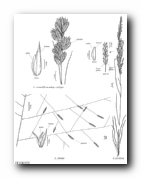
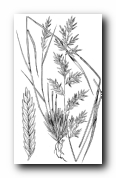
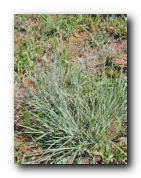
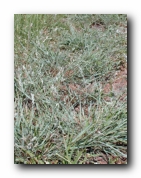
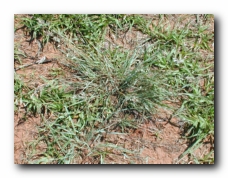
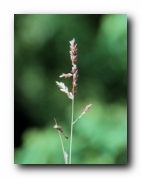
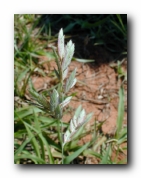
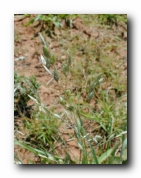
40" Rows:
Broadcast:
Sandy:
Loam:
Clay:
Habit: Tufted perennial.
Culms: Stems 15-50 cm. tall, mostly erect, simple, or branching.
Blades: 5-30 cm. long, 2-5 mm. wide, flat, soon becoming involute
toward the apex, with a long narrow tip.
Sheaths: Shorter or longer than the internodes, a tuft of hairs at the throat.
Ligule: A ring of very short hairs.
Inflorescence: Panicles condensed, usually red brown, the terminal exserted,
4-15 cm. (rarely to 40 cm.) long, the branches erect or ascending, rarely
sparsely pilose in the axils, bearing spikelets in clusters irregularly
arranged. Short panicles partly hidden in the second and third sheaths.
Spikelets: Usually red brown, crowded, sessile or nearly so, strongly flattened,
8-40-flowered, 6-20 mm. long, 3-5 mm. wide, numerous, singly or in
fascicles, flowers perfect or unisexual; the rachilla disarticulating
between the florets at maturity.
Glumes: 2, acute, subequal, 1.5 and 2 mm. long, scabrous on the keel.
Lemmas: Closely imbricate, 3 mm. long or more, rather abruptly narrowed to an
acute apex, the tip spreading out, the green nerves prominent, scabrous
on the keel.
Palea: Shorter than its lemma, prominently 2-nerved and 2-keeled, ciliate
on keels, bowed out below, often persistent on the rachis.
Anthers: 0.2-3 mm. long, gray.
Fruit: Grain 1 mm. long.
Habitat: Dry or sandy soil. August-September.
Remarks: Quite variable.
Synonyms: Eragrostis beyrichii J. G. Sm.
Eragrostis oxylepis (Torr.) Torr.
Special Notes: